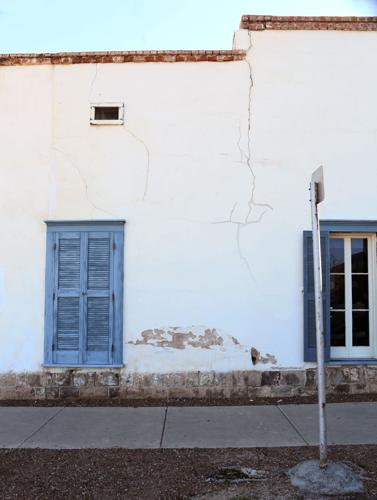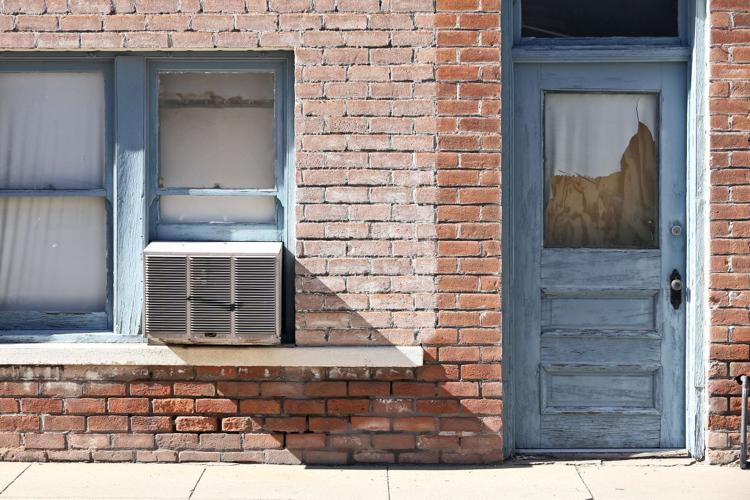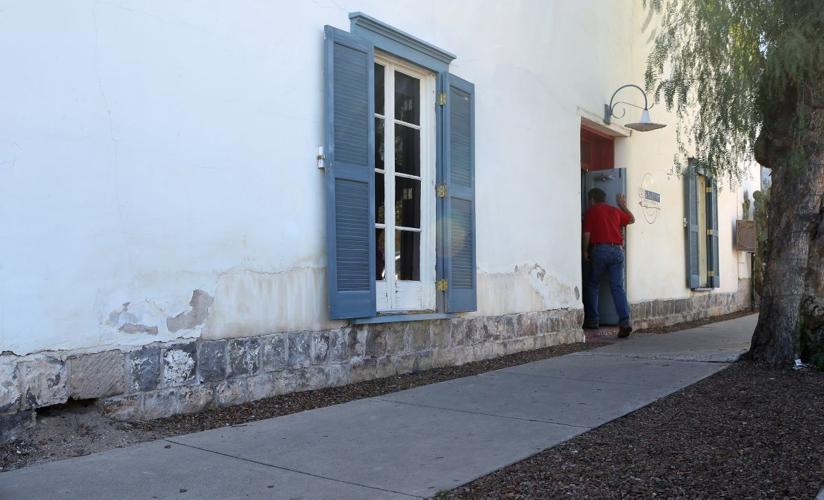A lack of maintenance funding has left five historic buildings maintained by the Tucson Museum of Art in need of $500,000 in repairs.
The museum is struggling to pay for the crucial work for the five buildings — the Edward Nye Fish House, the Café à la C’Art restaurant in the Stevens/Duffield House, the J. Knox Corbett House, the Romero House and La Casa Cordova — that are located in the historic El Presidio neighborhood and survived Tucson’s urban-renewal period in the 1960s, when many buildings downtown were demolished, erasing remnants of the city’s history.
The city, which owns the buildings and leases them to the museum, stopped funding an annual $60,000 stipend for museum building maintenance in April 2010, said Alan Hershowitz, chief operating officer for the Tucson Museum of Art.
The city and the museum signed a 99-year lease agreement in 1973.
Since the maintenance funding stopped, the museum has spent an average of $60,000 a year to help with repairs, even though, Hershowitz said, the museum is struggling to find funding.
The Stevens/Duffield House’s wall near the cafe shows pieces of chipped-off white plaster finish, revealing the hollowed structure underneath. Holes of various sizes also pock the exterior wall of La Casa Cordova.
The worsening condition of the buildings is testing the relationship between the city and the museum.
“Saving the buildings and then assigning them to have the Museum of Art maintain them has been a bad marriage,” said local historian Ken Scoville. “They’re interested in art.”
Museum leaders hope their new CEO, Jeremy Mikolajczak, who takes the helm at the end of the month, will bring new and creative fundraising ideas and opportunities for a better partnership with the city.
Tucson City Councilwoman Regina Romero said she expects the museum to fulfill its responsibility of maintaining the historic buildings, and she said she believes the museum is making a good-faith effort to address the problems.
HARD TIMES
The properties were in very bad shape when the museum took them over, Hershowitz said.
From 1973 through 2012, the museum spent more than $1.7 million fixing up the buildings. From 2010, it did so without the $60,000 the city provided each year, according to Hershowitz.
Hard times leading up to the stopping of maintenance funding added to the museum’s financial strain, Hershowitz said. It was compounded by a nearly $1 million embezzlement of museum funds by a former employee who spent the money on a gambling addiction in 2009 and was later sentenced to five years in prison.
“That hit us hard, and we lost city funds. And then of course you also have the recession coming up,” Hershowitz said. “So it was the perfect storm of nobody having the money to do what they want to do.”
Scoville, the historian, says he has seen the effects that the loss of city funds has had on the museum.
By about 2013, plaster and soil could be seen coming out of the buildings and onto the roads, said Scoville, who has been leading tours of the historic neighborhood since 1984.
“I’d continue to do tours and I’d walk by and start seeing more cracks and more problems and issues with the buildings,” Scoville said. Many of the historic buildings were made with antiquated materials, and due to their fragile nature must be specially maintained, he said.
Scoville spoke with various city officials about addressing the maintenance issues, but said he didn’t get far. “We’re in a town where we don’t like to save things,” Scoville said.
In late July 2014, museum officials, Ward 1 council aide Steve Arnquist, Scoville and city historic preservation officer Jonathan Mabry met to discuss ways to find financing for restorations and maintenance.
In June, Scoville went with Bob Vint, principal architect for Vint and Associates Architects Inc., to assess the repairs. Scoville documented the repair needs with photos. The city and the museum split the cost of Vint’s evaluation.
Vint put together a report of his findings in his preliminary historic building preservation assessment, which details observations and repair recommendations for each of the five buildings.
NO WILLFUL NEGLECT
While Vint’s report on many of the buildings notes that they are in stable condition, Scoville said Vint’s estimate for the repairs was about $500,000.
After the assessment, the museum got to work on some of the highest-priority items.
One of those was roof work on the Fish House, Hershowitz said. After years of neglect, the Fish House needed patching, flashing, masonry work, termite treatment and “further assessment of structural soundness of wood roof beams and decking,” Vint wrote in his report.
Photos in the report show deteriorating roofing and walls, interior damage from termites and evidence of water damage.
Hershowitz said there is more to be done on the Fish House roofing, maybe in a year or so, but emergency repairs were done.
Mabry, the historic preservation officer, said he is working with the museum to prioritize the remaining repairs.
Another problem is commercial kitchen equipment in another of the historic buildings, the Stevens/Duffield House.
Café à la C’Art has a walk-in freezer, and there’s heavy foot traffic on the old wooden floors.
Vint’s report says using the house as a cafe doesn’t meet the U.S. secretary of the interior’s Standards for the Treatment of Historic Properties.
Museum and city officials say the cafe isn’t harming the building’s historic status.
A restaurant is a proper adaptive re-use of the building, and it’s beneficial for the building itself, the museum and the community, said Mabry, who answered questions by email.
“Use of that building as a restaurant is one of the very best reuses of a publicly owned historic building because it provides the maximum opportunity for members of the public to enter and experience the historic space in their everyday lives, and they will likely come back again,” Mabry said.
“The historic flooring in the food prep area is being protected with pads that allow the wood flooring to breathe and can be removed for regular floor cleanings,” he said.
Whether or not members of the community personally agree with the cafe’s use of the building, Hershowitz said, “Concerns like that have been continually addressed, and we would not have permitted the cafe to continue if it would have been too much of a strain on the structure.”
Hershowitz recognizes that the water, heat and traffic needs that a restaurant requires can be a strain on the building, but, “We continually look at that and recognize that we have to respect the fact that it is a historic building, but that finding a way to adapt it and reuse it in a way that brings people into it.” Making it part of the community, “is also an important thing, and so those things get balanced.”
Vint declined to specify his position on the matter, but said his report speaks for itself.
Scoville said his biggest fear is that there will be a buildup of so many issues, especially at the Stevens/Duffield House, that the city will just demolish it due to lack of funding and proper use.
“I know that’s the ultimate fear — it starts with neglect,” Hershowitz said.
But this isn’t a case of willful neglect, Hershowitz said, and those who are helping to save the historic buildings have done the most they can.
The museum is getting cost estimates for the remaining repairs.
“These are very far from being condemnable, even in their current state, and if the museum and the city and the community have anything to do with it, the conditions will improve,” Hershowitz said.
“And everybody has the willingness to do it, we just have to find the money to do it.”






